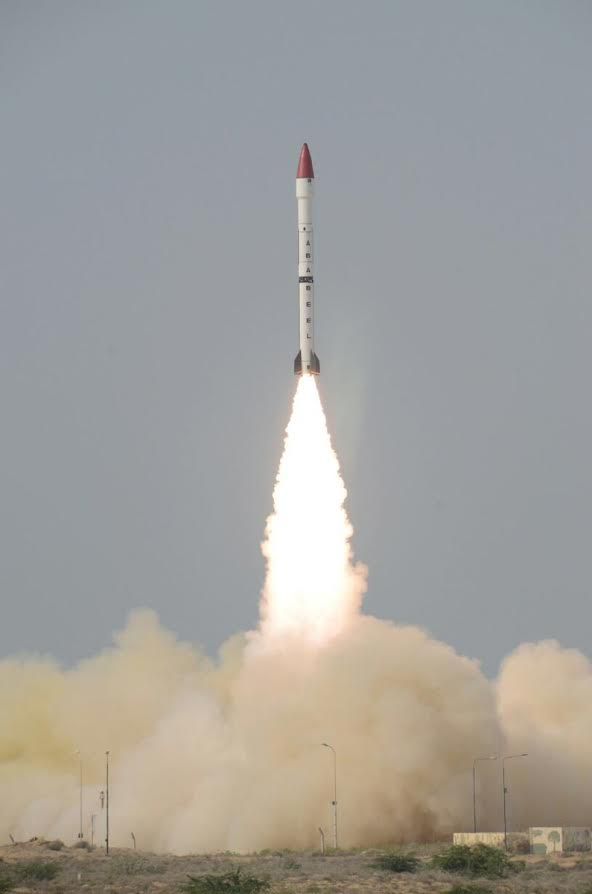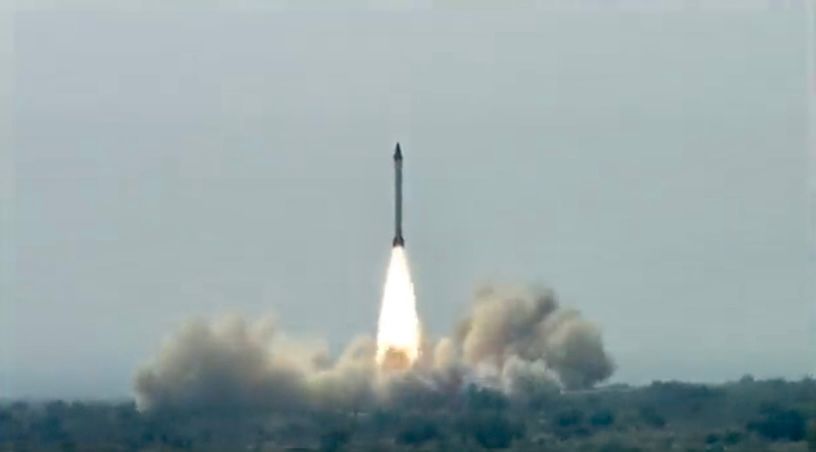Pakistan Conducts Ababeel Ballistic Missile Flight Test
On October 18, Pakistan conducted a successful flight test of the Ababeel surface-to-surface medium-range ballistic missile, which can carry nuclear and conventional warheads. The launch was observed by chairman of Pakistan’s Joint Chiefs of Staff Committee General Sahir Shamshad Mirza, top officials from the Strategic Plans Division and Strategic Forces Command, as well as scientists and engineers from strategic organizations.
The purpose of the test flight, according to ISPR, the Pakistan Armed Forces’ media and public relations wing, was to re-validate various designs, technical parameters, and performance evaluations of various subsystems of the Ababeel weapon system. According to the army’s media wing, the missile system is “aimed at strengthening deterrence and enhancing strategic stability in the region through the operationalization of Full Spectrum Deterrence in the overall construct of Credible Minimum Deterrence.”

General Sahir Shamshad Mirza, chairman of Pakistan’s Joint Chiefs of Staff Committee, praised the technical expertise, dedication, and determination of everyone involved in the successful test in a statement. Pakistan’s President, Arif Alvi, congratulated interim Prime Minister Anwaar-ul Haq Kakar, service chiefs, and all members of the Strategic Forces on their achievement.
Although Pakistani authorities reported that the test flight was successful, some unconfirmed social media reports claimed that the test went wrong, and that the missile crashed in the Balochistan province city of Dera Bugti. Reports supporting the claims with some photographs showing the wreckage of the missile were later rejected by the Pakistani government.
Ababeel is a medium-range surface-to-surface ballistic missile developed by Khan Research Laboratories (KRL) in response to India’s Ballistic Missile Defense Program. The missile, which was first shown to the public in a flight test on January 24, 2017, is similar in design to Pakistan’s Shaheen III MRBM and China’s CSS-7 SRBM. The missile, which is thought to be 21.5 meters long and 1.4 meters in diameter, is notable for its capacity to launch multiple warheads using multiple independently targetable reentry vehicle (MIRV) technology. The missile has a maximum range of 2,200 kilometers (1,400 miles) and is propelled by a three-stage solid-fuel engine.

